Month: February 2012
Remembering Davy Jones
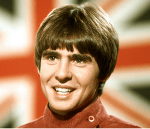 His first professional acting gig happened when he was eleven. He was a star on the BBC’s Coronation Street at age 16. And when he was 20, Davy Jones was picked from a casting call of thousands to be part of a made-for-television rock band that became one of the most popular acts of the decade.
His first professional acting gig happened when he was eleven. He was a star on the BBC’s Coronation Street at age 16. And when he was 20, Davy Jones was picked from a casting call of thousands to be part of a made-for-television rock band that became one of the most popular acts of the decade.
After seeing the film A Hard Day’s Night, Bob Rafelsonand Bert Schneider decided to create a TV show that would feature what they hoped would be America’s answer to the Beatles. Their first choice was to sign John Sebastian’s Lovin’ Spoonful, but that group already had a record contract. So they ran an ad in Daily Variety and The Hollywood Reporter in the fall of 1965 to find their musicians. Continue reading “Remembering Davy Jones” →
Bob Seger on Swingin Time
 From 1965 through 1968 Detroit could challenge Dick Clark’s American Bandstand dominance. The two local dance programs we remember are Club 1270 and Swingin Time. Channel 7 was home to the program named after the frequency of their sister station. Club 1270 was hosted by Lee Alan, Joel Sebastian and Dave Prince and during it’s brief run it showcased the talents of everyone from local boy Jamie Coe to mega-stars like Leslie Gore and the Rolling Stones. Continue reading “Bob Seger on Swingin Time” →
From 1965 through 1968 Detroit could challenge Dick Clark’s American Bandstand dominance. The two local dance programs we remember are Club 1270 and Swingin Time. Channel 7 was home to the program named after the frequency of their sister station. Club 1270 was hosted by Lee Alan, Joel Sebastian and Dave Prince and during it’s brief run it showcased the talents of everyone from local boy Jamie Coe to mega-stars like Leslie Gore and the Rolling Stones. Continue reading “Bob Seger on Swingin Time” →
The Hollywood Palace
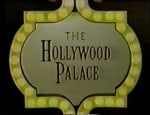 In December, 1963, Jerry Lewis‘ first solo foray into a television variety show was in trouble. ABC executives were scrambling to find a replacement for his Saturday night slot and decided to keep the variety without regular host. On January 4th, The Hollywood Palace made it’s debut and for the next six years, it was one of the most watched variety shows on television. Across 192 episodes, literally every major entertainer walked across it’s stage. Continue reading “The Hollywood Palace” →
In December, 1963, Jerry Lewis‘ first solo foray into a television variety show was in trouble. ABC executives were scrambling to find a replacement for his Saturday night slot and decided to keep the variety without regular host. On January 4th, The Hollywood Palace made it’s debut and for the next six years, it was one of the most watched variety shows on television. Across 192 episodes, literally every major entertainer walked across it’s stage. Continue reading “The Hollywood Palace” →
The Abbey Road Photo Shoot
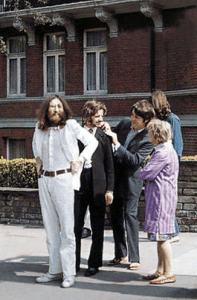 From the Beatle Bible – “All four Beatles gathered at EMI Studios on the morning of Friday, August 8, 1969, for one of the most famous photo shoots of their career. Photographer Iain Macmillan took the famous image that adorned their last-recorded album, Abbey Road.
From the Beatle Bible – “All four Beatles gathered at EMI Studios on the morning of Friday, August 8, 1969, for one of the most famous photo shoots of their career. Photographer Iain Macmillan took the famous image that adorned their last-recorded album, Abbey Road.
“A policeman held up the traffic as Macmillan, from a stepladder positioned in the middle of the road, took six shots as the group walked across the zebra crossing just outside the studio.
“Iain Macmillan was a freelance photographer and a friend to John Lennon and Yoko Ono. He used a Hasselblad camera with a 50mm wide-angle lens, aperture f22, at 1/500 seconds.
“Prior to the shoot, Paul McCartney had sketched his ideas for the cover, to which Macmillan added a more detailed illustration.
“As the group waited outside the studio for the shoot to begin, Linda McCartney took a number of extra photographs. Continue reading “The Abbey Road Photo Shoot” →
Comparing Keener to the Billboard Hot 100
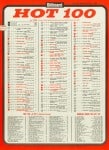 Back before national programmers and record company marketing money decided which records got airplay, local stations could be true hit makers. WKNR helped rocket a ton of Detroit area talent onto the national stage, including Bob Seger, Deon Jackson, Mitch Ryder and the Rationals. Keener was also the key proving ground for Motown acts. Berry Gordy, Jr.’s special relationship with Scott Regen made it possible for Keener to have unique on-air access to artists and the WKNR Music Guide became a leading indicator of potential national success.
Back before national programmers and record company marketing money decided which records got airplay, local stations could be true hit makers. WKNR helped rocket a ton of Detroit area talent onto the national stage, including Bob Seger, Deon Jackson, Mitch Ryder and the Rationals. Keener was also the key proving ground for Motown acts. Berry Gordy, Jr.’s special relationship with Scott Regen made it possible for Keener to have unique on-air access to artists and the WKNR Music Guide became a leading indicator of potential national success.
How did the WKNR Music Guide compare to the industry standard Billboard Hot 100? Visit the Motor City Radio Flashback site to see a 1964 example.
“Exchanging” Telephone Numbers
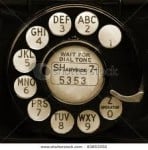 For those who came of age in Detroit anytime before the 1970s, the phrase “TYler 8-7100” likely resonates in memory. That was the phone number for the “We do good work” folks at Belvedere Construction. The use of “Exchange Names” as a way to help remember telephone numbers had its genesis in England in the 20s. By the 50s we were using the 2 Letter – 5 number format to delineate phone numbers across the Detroit area. Continue reading ““Exchanging” Telephone Numbers” →
For those who came of age in Detroit anytime before the 1970s, the phrase “TYler 8-7100” likely resonates in memory. That was the phone number for the “We do good work” folks at Belvedere Construction. The use of “Exchange Names” as a way to help remember telephone numbers had its genesis in England in the 20s. By the 50s we were using the 2 Letter – 5 number format to delineate phone numbers across the Detroit area. Continue reading ““Exchanging” Telephone Numbers” →
Jungle Fever
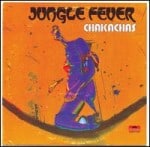 If Mrs. Knorr thought that Tommy James’ “I Think We’re Alone Now” was a little too much for the Keener airwaves, then “Jungle Fever” by the Chakachas was well over the edge of the envelope. That it became a hit at all is one of those improbable stories that seem to proliferate in the music business.
If Mrs. Knorr thought that Tommy James’ “I Think We’re Alone Now” was a little too much for the Keener airwaves, then “Jungle Fever” by the Chakachas was well over the edge of the envelope. That it became a hit at all is one of those improbable stories that seem to proliferate in the music business.
Listen to the record, or look at any of the promotional material and you’d be certain that the band was African American, or Afro-Cuban. In fact, they were a bunch of white guys from Belgium, who first got together in the 1950s. By 1965 they had gone their separate ways and it wasn’t until 1970 that producer Roland Kluger pulled the bulk of the group back into studio to record one of the most infamous records of the Keener era. Continue reading “Jungle Fever” →
Keener Bosa Nova
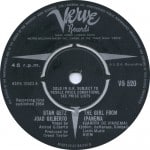 In 1964, America’s musical tastes had not yet fully polarized. While the wave of British hits washed over us, there was still an eclecticism to the WKNR play list that made it possible for a jazz legend to link up with a Brazilian samba singer and have a hit record.
In 1964, America’s musical tastes had not yet fully polarized. While the wave of British hits washed over us, there was still an eclecticism to the WKNR play list that made it possible for a jazz legend to link up with a Brazilian samba singer and have a hit record.
Such was the unique story of the Stan Getz / Astrud Gilberto partnership. Getz came into the spotlight in the 1940s as the silky smooth tenor sax player in Woody Herman’s Thundering Herd big band. He was introducing bosa nova to American ears when he teamed up with Gilberto, who was a last minute choice to record the vocals for “The Girl From Ipanema”. Continue reading “Keener Bosa Nova” →

